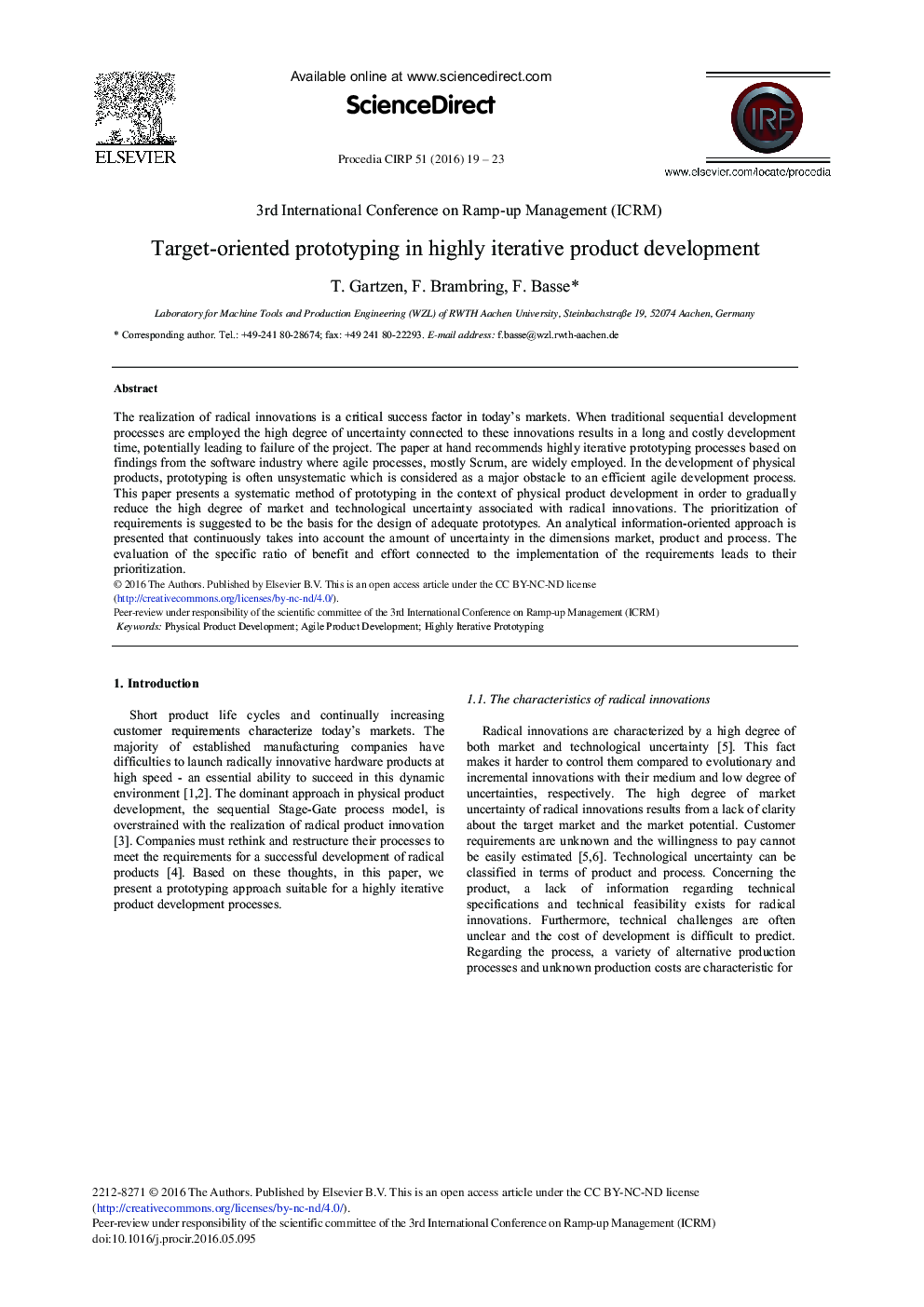| Article ID | Journal | Published Year | Pages | File Type |
|---|---|---|---|---|
| 1698094 | Procedia CIRP | 2016 | 5 Pages |
The realization of radical innovations is a critical success factor in today's markets. When traditional sequential development processes are employed the high degree of uncertainty connected to these innovations results in a long and costly development time, potentially leading to failure of the project. The paper at hand recommends highly iterative prototyping processes based on findings from the software industry where agile processes, mostly Scrum, are widely employed. In the development of physical products, prototyping is often unsystematic which is considered as a major obstacle to an efficient agile development process. This paper presents a systematic method of prototyping in the context of physical product development in order to gradually reduce the high degree of market and technological uncertainty associated with radical innovations. The prioritization of requirements is suggested to be the basis for the design of adequate prototypes. An analytical information-oriented approach is presented that continuously takes into account the amount of uncertainty in the dimensions market, product and process. The evaluation of the specific ratio of benefit and effort connected to the implementation of the requirements leads to their prioritization.
